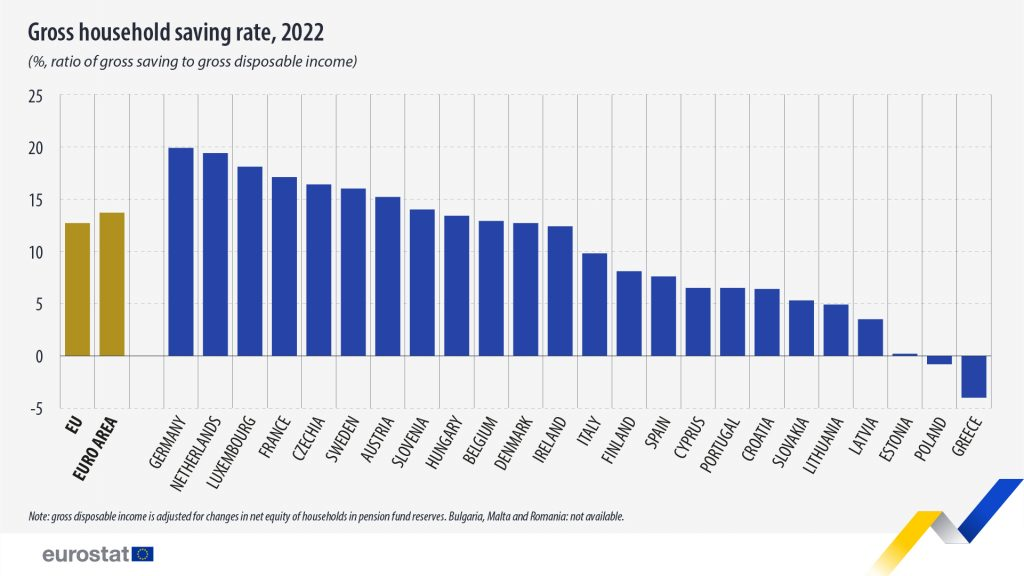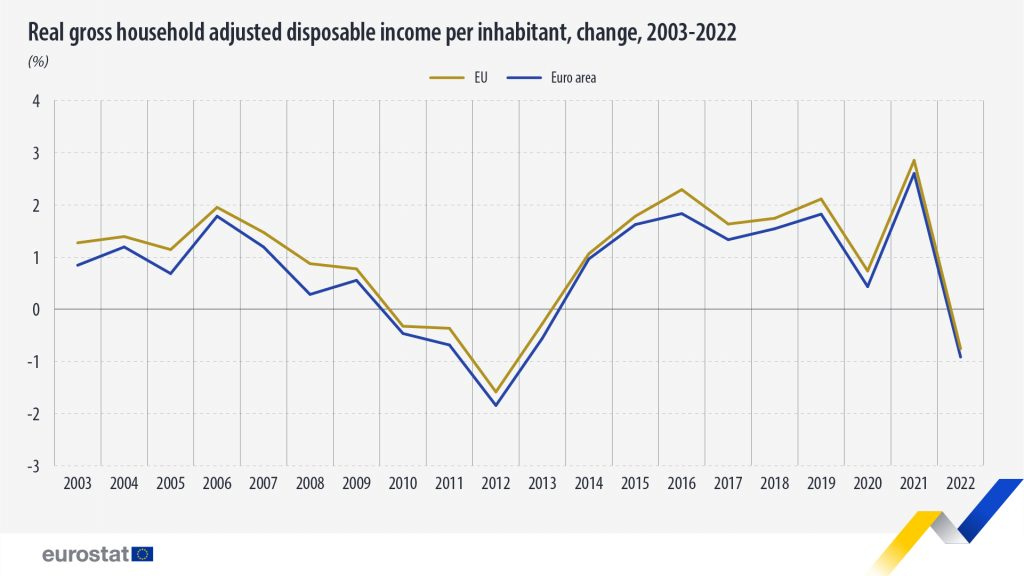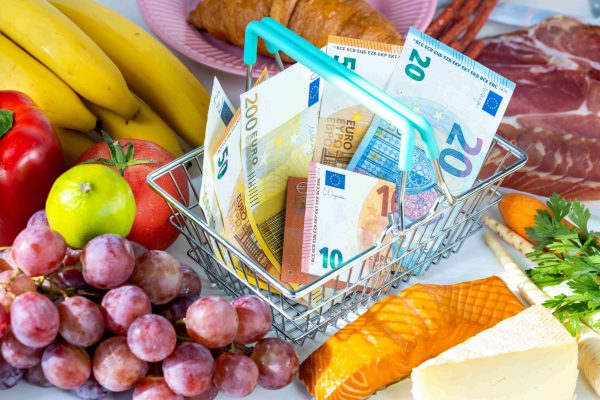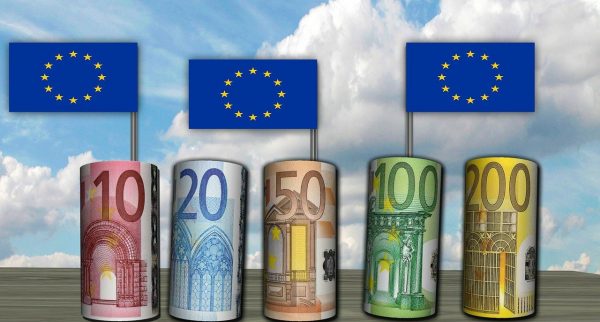
Eurostat household savings figures from 2022 show that only citizens of Poland and Greece spent more than they saved and posted negative savings rates of -0.8pct and -4.0pct respectively, against an average EU savings rate of 12.7pct.
The highest savings rates, which is defined as gross household savings divided by gross disposable income, in the EU were recorded in Germany (19.9pct), the Netherlands (19.4pct) and Luxembourg (18.1pct).
Twelve members recorded savings rates below 10pct in 2022, but only Poland and Greece were in ‘the red’ with citizens spending more than their gross income. This means that households dip into their savings or are forced to borrow to finance expenditures, explained Eurostat.

For the first time since 2013, real gross household adjusted disposable income per EU inhabitant decreased 0.8pct in 2022. This in notable because it is the first time since the global financial and economic crisis that rates decreased. 
Eurostat defines real gross household adjusted disposable income as the total amount of money households have after subtracting income taxes and pension contributions and goods and services received free or charge from the government and non-profits that serve households (education and health services).
Source: tovima.com
Latest News

The Likely Impact of Trump Tariffs on Europe and Greece
Trump tariffs are expected to negatively affect economic growth in the Eurozone while Greece's exports could take a hit.

Motor Oil Results for 2024: Adjusted EBITDA of 995 mln€; Proposed Dividend of 1.4€ Per Share
Adjusted EBITDA for 2024 was down 33% yoy. The adjusted profit after tax for 2024 stood at 504 million euros, a 43% decrease from the previous year

Cost of Living: Why Greece’s 3% Inflation Is Raising Alarm
Greece appears to be in a more difficult position when it comes to price hikes, just as we enter the era of Trump’s tariffs.

Fitch Ratings Upgrades the Four Greek Systemic Banks
NBG’s upgrade reflects the bank’s ongoing improvements in its credit profile, Fitch notes in its report, including strong profitability, a reduction in non-performing exposures (NPEs), and lower credit losses

Trump to Announce Sweeping New Tariffs Wednesday, Global Retaliation Expected
With Trump's announcement just hours away, markets, businesses, and foreign governments are bracing for the fallout of one of the most aggressive shifts in U.S. trade policy in decades.

Inflation in Greece at 3.1% in March, Eurostat Reports
Average inflation in the eurozone settled at 2.2%, compared to 2.3% in February

Greece’s Unemployment Rate Drops to 8.6% in February
Despite the overall decline, unemployment remains higher among women and young people.

Jerry Kalogiratos Highlights Key Role of Energy Transition and Data Demand in LNG Outlook
Energy transition and the prospects of LNG were discussed at Capital Link’s 19th Annual International Maritime Forum, during a panel discussion with Jerry Kalogiratos (Capital Clean Energy Carriers Corp.)

Santorini Safe and Ready for a Dynamic Tourism Season
Authenticity, cultural heritage, and genuine experiences at the center of Santorini's new promotional campaign

Electricity Bills: Greece Announces Reduced Tariffs Schedule
Greece will now offer lower electricity rates between 11:00-15:00 and 02:00-04:00












![Τουρκία: Μεγάλες βλέψεις για παραγωγή ηλεκτρικών οχημάτων [γράφημα]](https://www.ot.gr/wp-content/uploads/2025/03/ot_turkish_autos-90x90.png)











![ΕΛΣΤΑΤ: Αυξήθηκε η οικοδομική δραστηριότητα κατά 15,6% το Δεκέμβριο [πίνακες]](https://www.ot.gr/wp-content/uploads/2025/03/DSC9655-2-1024x569-1-90x90.jpg)

![Σούπερ μάρκετ: Αυξήσεις τιμών 1,59% τον Μάρτιο [γραφήματα]](https://www.ot.gr/wp-content/uploads/2024/04/supermarketkarotsirafia-1-600x400.jpeg)















 Αριθμός Πιστοποίησης
Αριθμός Πιστοποίησης